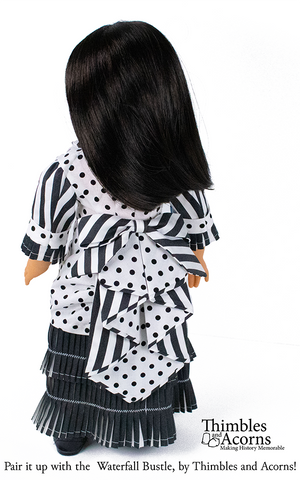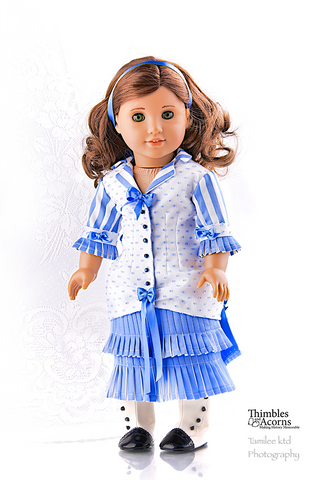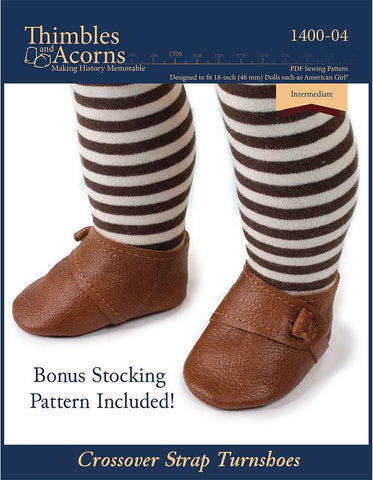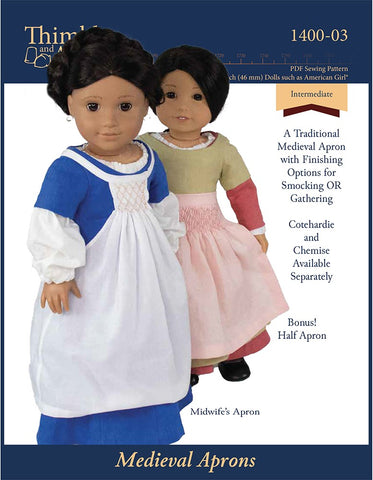The introduction of synthetic dyes not only changed the look of fashion in the 19th century, but it also had a profound effect on the way painters viewed the world around them. As their palettes began to bloom with color, so did their paintings. The style became more relaxed - using larger brush strokes, and the use of color was emphasized - shadows were created with complementary colors and black was forbidden. This new avante guard form of painting became known as Impressionism because it relied less on details and more on first impressions. The colors were bright, the style was bold, and the criticism was plentiful from those whose eyes were accustomed to the more sober colors of Academic painting.
Albert Bartholomé (1848-1928), a French painter, joined the Impressionist movement in the 1870s. He and his wife Prospérie (1849-1887), known as Périe, daughter of the Marquis de Fleury, supported the Impressionist movement by hosting salons for their artistic circle of friends which included Edgar Degas, Mary Cassatt, Berthe Morisot, Claude Monet, Jacques-Emile Blanche, and Camille Pissarro. Thanks to people like the Bartholomés, the public was able to view and critique the work of Impressionist painters. Though at first hostile to its unfinished, sketch-like appearance, the public gradually came to believe that the Impressionists had captured a fresh and original vision.
This dress pattern is a reproduction of the dress worn by Périe, in her husband's 1880 portrait of her entitled “In the Conservatory”. It is cut in the Natural Form style that became popular for a short time between the 1870s Bustle Period and the 1880s Bustle Period and features a draped Curaiss bodice with an attached bustle in the back and a skirt that is pleated to the stripe. The ¾ length sleeves are stitched along the shoulder and back of the arm instead of under the arm giving it the look of inset sleeves. Additional instructions for a simple, unpleated skirt are included for the less adventurous seamstress.
This PDF Pattern by Thimbles and Acorns is sized to fit 18 inch American Girl® and Other Similarly Sized Dolls.
Be sure to check out the Thimbles and Acorns Waterfall Bustle Pattern, which is a perfect accompaniment to this dress.
Recommended Fabrics: Bodice in lightweight cotton, linen, dotted Swiss, voile, or silk. Not suitable for knits. Bodice Lining in lightweight cotton batiste, muslin, or silk. Not suitable for knits. Skirt in lightweight cotton, linen, or silk. For the pleated striped skirt, 3/8-inch stripes are ideal, but slightly wider widths are suitable.
Supplies Needed:Fabrics:
-Bodice ~ 1/3 yard (1/3 m)
-Bodice Lining ~1/2 yard (1/2 m)
-Pleated Skirt ~ 2/3 yard (2/3 m)
-Unpleated Skirt ~ 1/2 yard (1/2 m)
*Note: Fabric amounts are generous; most items can be cut from leftover pieces of fabric.
Notions:
-Thread. 1 yard 2-inch (5 cm) wide ribbon; one yards 3/8-inch (9 mm) wide ribbon or four small ribbon bows; six 1/4-inch (6 mm) buttons; one small snap; four medium snaps; six additional small snaps if not using working buttonholes.
Skill Level: Intermediate
What You Get: One 27 page sewing pattern that you digitally download as a PDF file so you can start your project immediately! The PDF sewing pattern provides full color step-by-step illustrated instructions and full size pattern pieces. A PDF reader is required to view and print the files (example: Adobe Reader or Preview for MAC). The download link is received immediately after the transaction is complete. Print copies are NOT available
Download, Print, Sew!
*Creating a customer account will ensure that you have the ability to access your purchased (and free) files at any time.
For detailed information and answers to the most common questions, be sure to read the Terms of Use and FAQ's related to the doll clothes patterns sold at Pixie Faire.
Pixie Faire and the designers featured are not affiliated with American Girl®.











